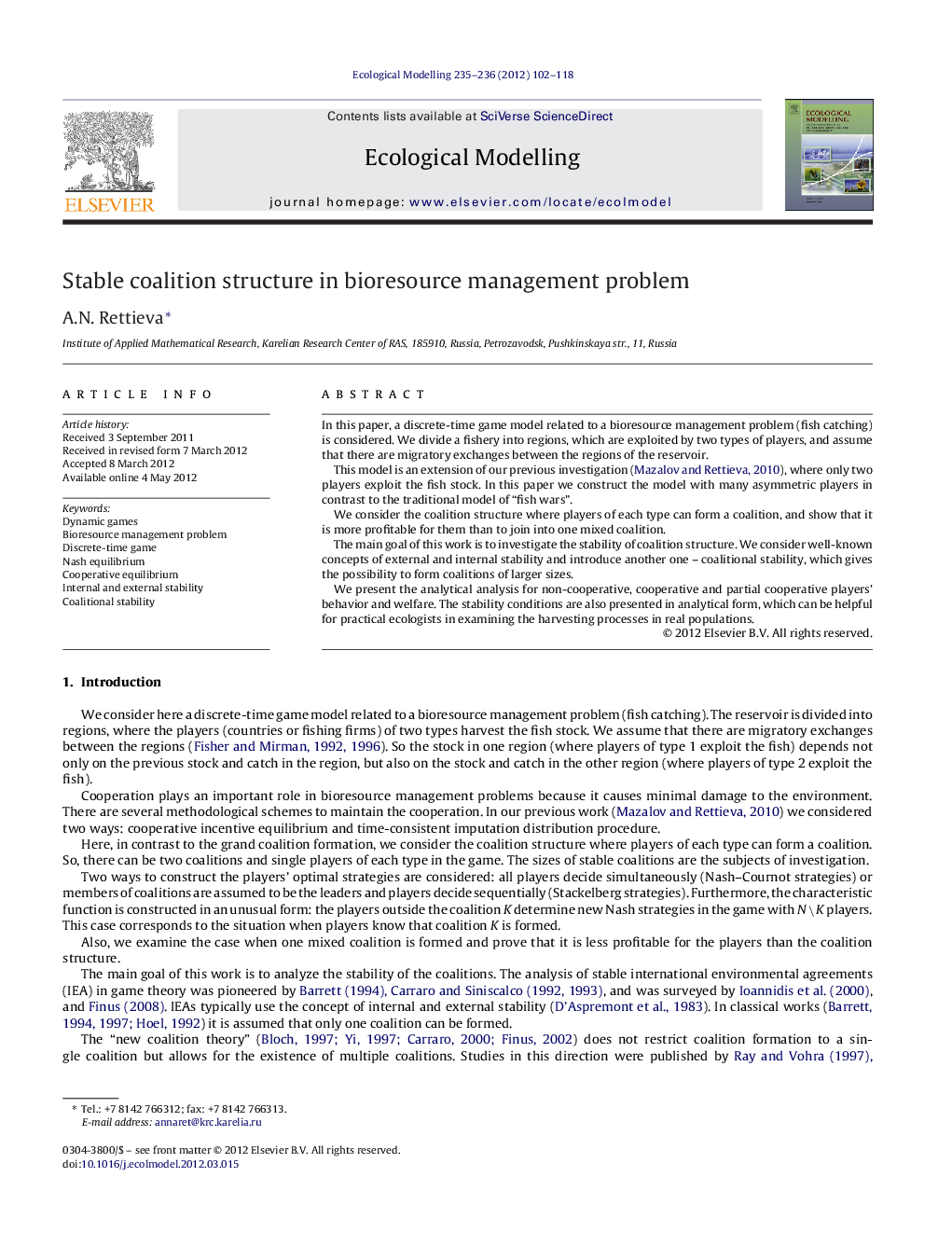| Article ID | Journal | Published Year | Pages | File Type |
|---|---|---|---|---|
| 4376453 | Ecological Modelling | 2012 | 17 Pages |
In this paper, a discrete-time game model related to a bioresource management problem (fish catching) is considered. We divide a fishery into regions, which are exploited by two types of players, and assume that there are migratory exchanges between the regions of the reservoir.This model is an extension of our previous investigation (Mazalov and Rettieva, 2010), where only two players exploit the fish stock. In this paper we construct the model with many asymmetric players in contrast to the traditional model of “fish wars”.We consider the coalition structure where players of each type can form a coalition, and show that it is more profitable for them than to join into one mixed coalition.The main goal of this work is to investigate the stability of coalition structure. We consider well-known concepts of external and internal stability and introduce another one – coalitional stability, which gives the possibility to form coalitions of larger sizes.We present the analytical analysis for non-cooperative, cooperative and partial cooperative players’ behavior and welfare. The stability conditions are also presented in analytical form, which can be helpful for practical ecologists in examining the harvesting processes in real populations.
► Discrete-time bioresource management problem with many asymmetric players is considered. ► Two forms of coalition formation process are examined: Nash–Cournot and Stackelberg. ► The first one is better for free-riding (internally unstable), the second – for stable coalitions. ► The coalition structure is more profitable for players than one mixed coalition. ► The extension of intercoalition stability with possible moves of a set of players is presented.
